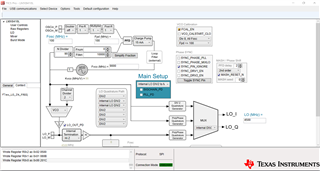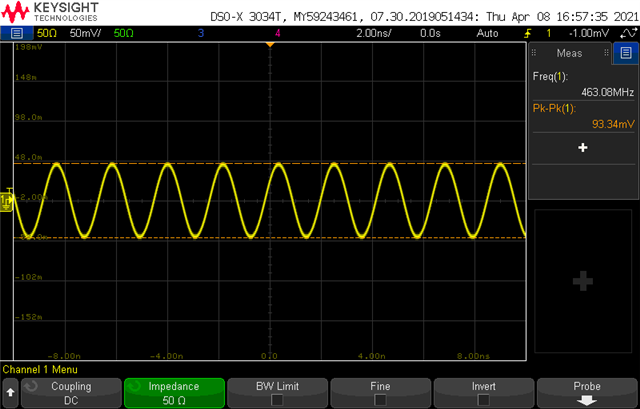Other Parts Discussed in Thread: LMX8410L
Hello,
We're currently testing the LMX8410L evaluation module.
EVM and Voltage gain abnormal phenomenon need to be resolved.
Here is our testing environment:
Signal generator : Keysight VXG M9384B
Mixed Signal Oscilloscope : Keysight MXR608A
We measured EVM and channel power on LMX8410L evaluation module at 4.5GHz LO with a 100MHz wide 64QAM 5GNR RF signal.
We inject RF power -15dBm from signal generator to RFIN(J11),
and connected IF-QP to Oscilloscope channel 1,IF-IP to Oscilloscope channel 2.(single-ended)
We get 5.676% of EVM and -17.52 dBm of channel power. (shown below)
The gain we measured is very different from data sheets typical gain 11dB at 4GHz and 5GHz.
How can we get a better EVM and the voltage gain close to the data sheet?
Thanks a lots.
Alan Ke



